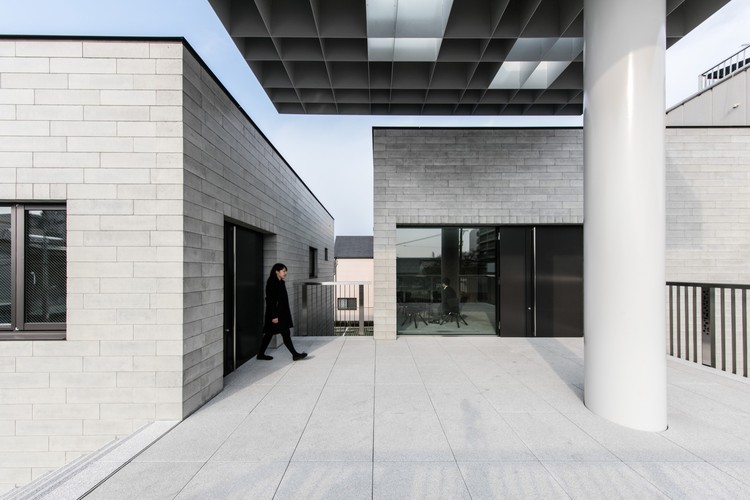
-
Architects: Takenaka Corporation
- Area: 660 m²
- Year: 2016
-
Photographs:Tomoki Hahakura
-
Manufacturers: Nikko sash, Taiyo Cement Industrial, YKK AP

Text description provided by the architects. In the city of Sakai, Osaka, the site sits on the edge of a crowded residential section located in the middle of the Mozu Kofungun (a cluster of ancient tumuli) area.

This project involved a plan to integrate two buildings on two adjacent lots with different purposes: a gas station and an office for a public interest incorporated foundation.

We pursued a design that would visually integrate the foundation, which supports scholarships for outstanding students with bright prospects and provides funding for small- and middle-sized companies that have demonstrated superb performance in manufacturing technologies, and the gas station, which is a basic facility vital to the local community.


The two purposes that usually have completely different configurations were united by disassembling functions into boxes and repositioning them to create a spacious area, and by using fill-up concrete block structure for a fire-resistant fence that divides the two sections. The building group gives a sense of unity and scale that fits seamlessly into the surrounding residential area.



Similarly, eaves were allocated to unify the office and the gas station. They also contribute to the ambience of the cherry tree-lined street that leads from the Mausoleum of Emperor Nintoku into the site. They also help create an open space connecting the gas station and also the foundation office sitting behind it to the cityscape.

Also, by raising the approach to the innermost foundation office to the second-floor terrace, a balance was created between the two sections that were not divided by the fire-resistant fence, and a three-dimensional street-like space was produced. From the terrace, cherry trees lining the roadside can be seen over the gas station, providing open feeling.

For the grouped buildings, the structure is made of fill-up concrete blocks (W600×H150×D240). The eaves also have a group-like configuration with inter-locked steel plates that are 6 mm, 9 mm and 12 mm thick.

These site and structural plans have produced a building group that fits into the city environment as well as nestling in comfortably with the local community.































